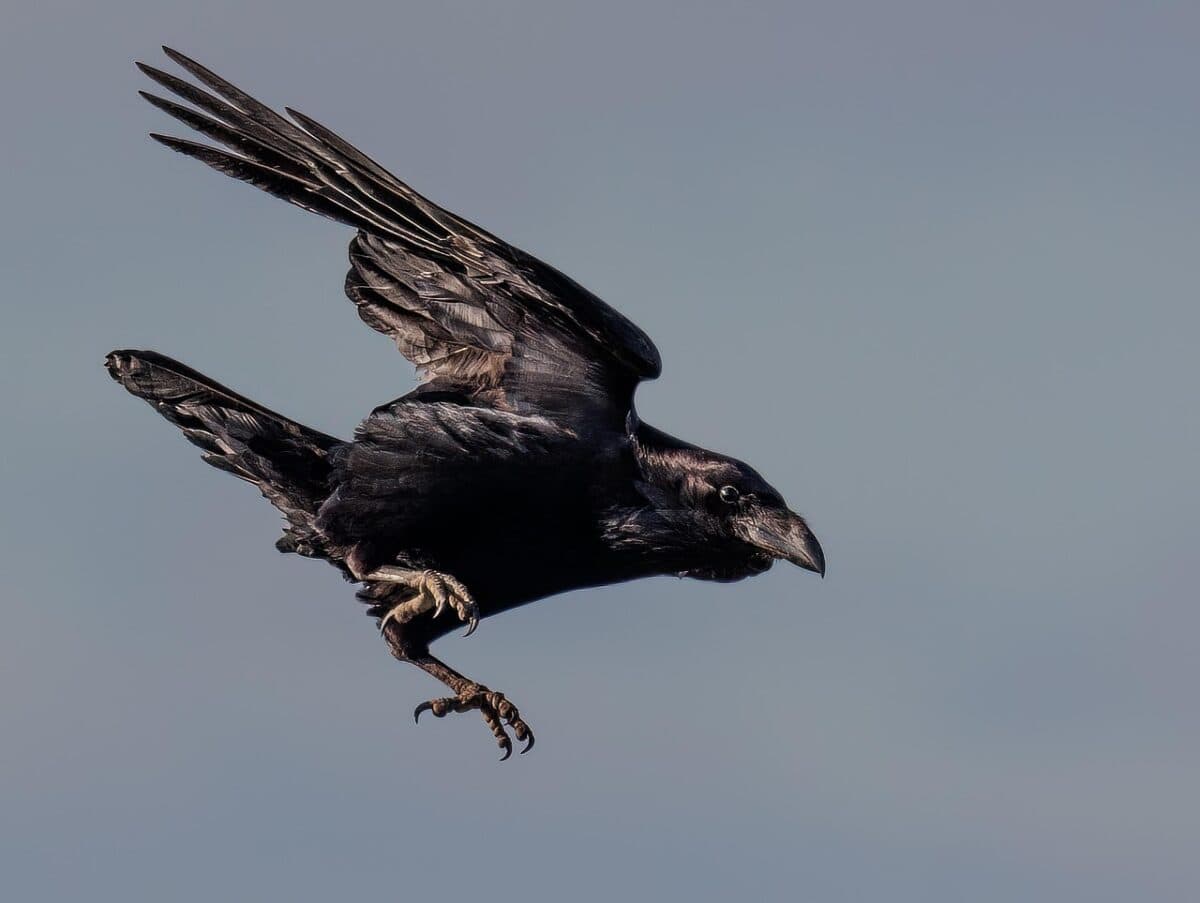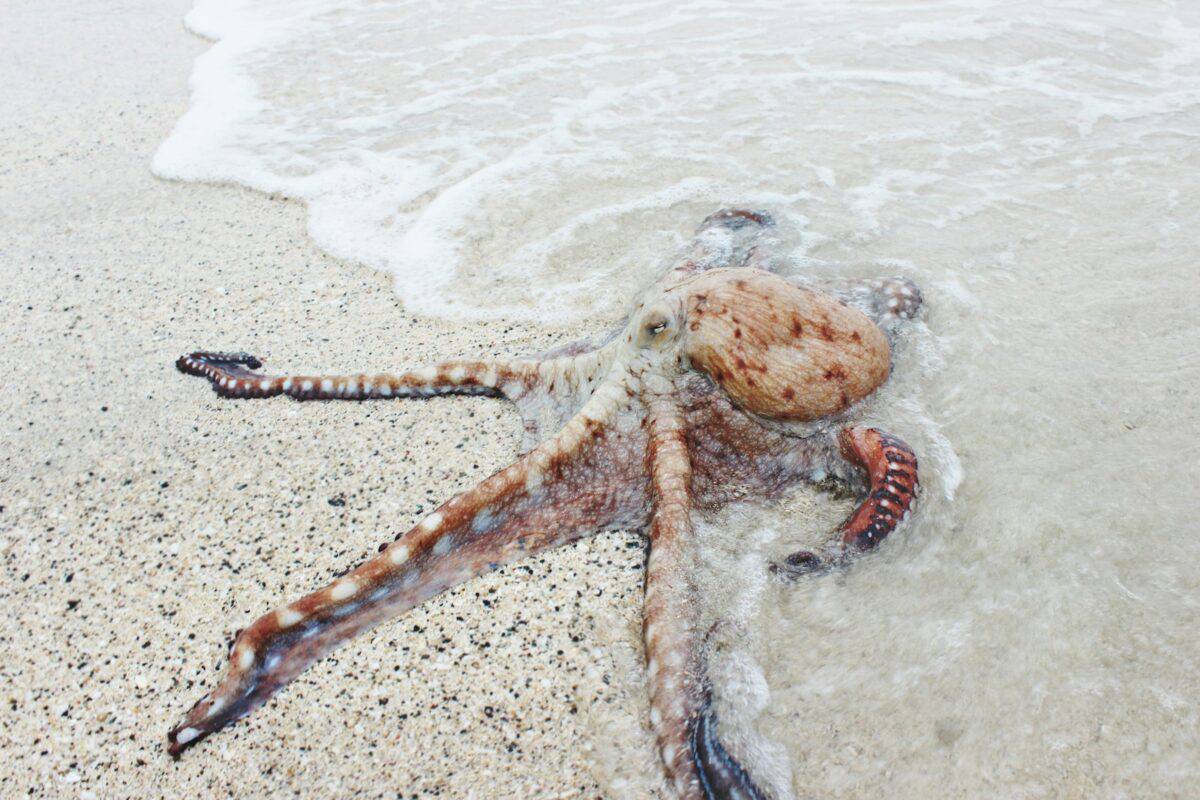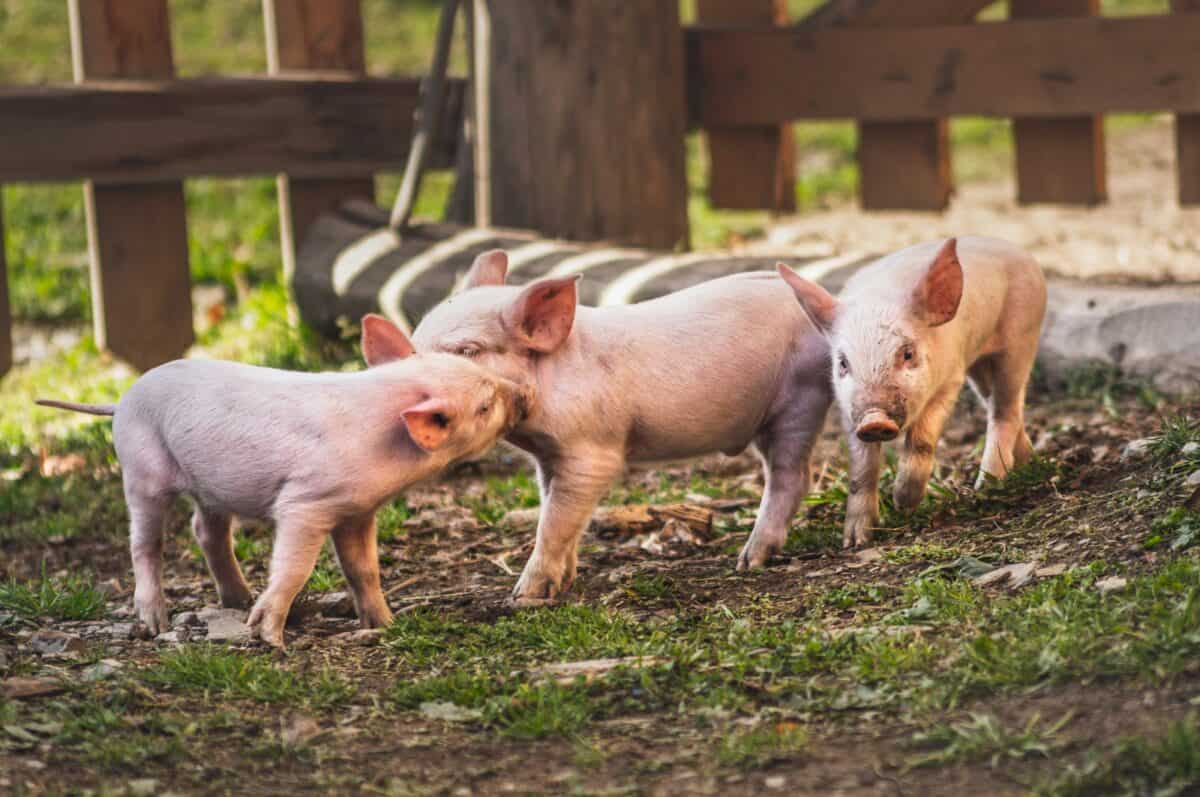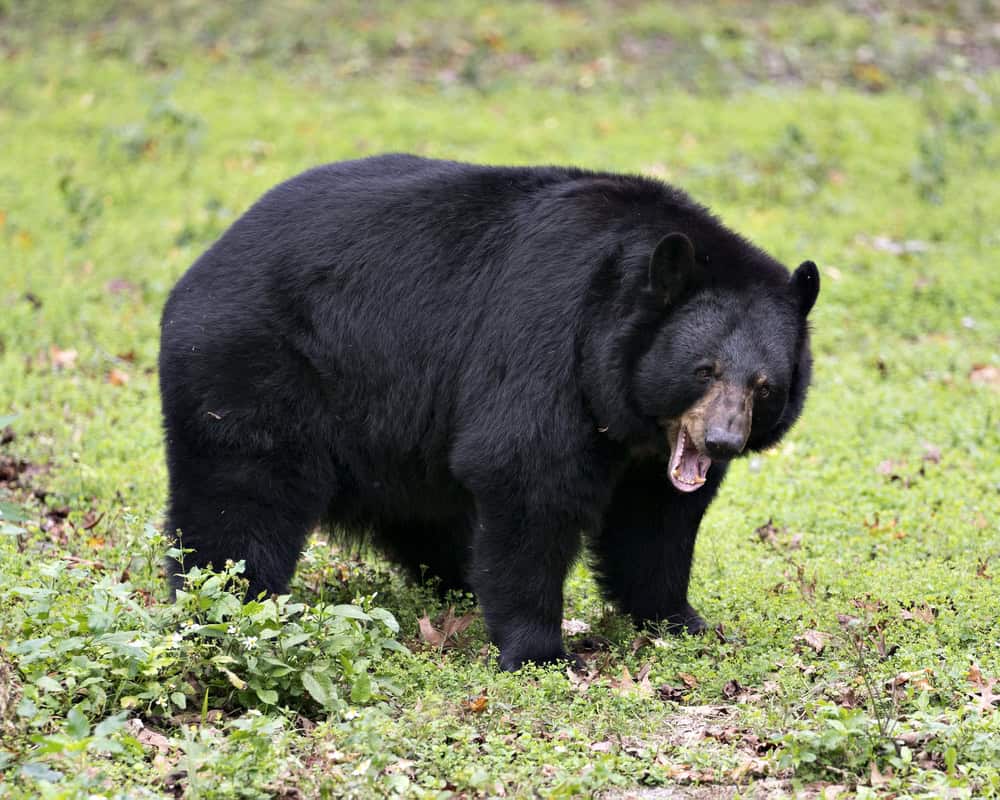Intelligence in the animal kingdom extends far beyond what we might assume. While humans have long considered themselves the pinnacle of cognitive ability, research continues to reveal surprising intellectual capabilities in creatures across the globe. From problem-solving and tool use to emotional intelligence and memory, these 15 animals demonstrate remarkable cognitive abilities that challenge our understanding of animal intelligence. Some of these species might be familiar, while others might surprise you with their hidden talents and complex mental capabilities. Let’s explore these fascinating creatures whose intelligence goes well beyond what meets the eye.
15. Corvids Ravens and Crows

Corvids, particularly ravens and crows, possess problem-solving abilities that rival those of great apes. These birds can use tools, remember human faces for years, and even plan for the future. In laboratory settings, ravens have demonstrated the ability to solve multi-step puzzles and even hold grudges against humans who have wronged them. New Caledonian crows can craft tools from raw materials to extract food from difficult places—a skill once thought to be exclusive to primates. Perhaps most impressively, these birds understand causality: they comprehend that dropping stones in water raises the level, allowing them to access floating food. This understanding of water displacement demonstrates an abstract comprehension of physics that surprised researchers worldwide.
14. Octopuses The Intelligent Invertebrates

Octopuses stand out as remarkable anomalies in the invertebrate world, possessing intelligence that has evolved completely independently from mammals. With approximately 500 million neurons distributed throughout their bodies and arms, these cephalopods can solve complex puzzles, recognize individual humans, and escape from seemingly secure tanks by unscrewing lids or squeezing through tiny openings. Researchers have observed octopuses using coconut shells as portable shelters and employing tools for defense and hunting. One famous example involves Otto, an octopus at a German aquarium who learned to throw rocks at the lights above his tank when he wanted darkness. Their short lifespan of just 1-2 years makes their capacity for learning even more impressive, as they acquire these skills quickly despite limited time for development.
13. Elephants Giant Intellects

Elephants possess the largest brains of any land animal, with an impressive structure similar to the human brain but with a more developed hippocampus, which may explain their exceptional memory. These gentle giants recognize themselves in mirrors—a rare trait shared by only a few species—demonstrating self-awareness. Their emotional intelligence is profound; elephants comfort distressed herd members, mourn their dead through rituals, and can remember specific humans and elephants for decades. Field researchers have documented elephants using tools, such as branches to swat flies or scratch hard-to-reach places, and modifying sticks to reach food. Their communication system involves low-frequency sounds that can travel up to six miles, allowing separated herds to coordinate movements across vast distances. Perhaps most remarkably, elephants have been observed cooperating on tasks that require two individuals to simultaneously pull different ends of a rope to receive food—a clear demonstration of understanding teamwork and cause-effect relationships.
12. Dolphins Marine Masterminds

Dolphins possess brains that are proportionally larger than most animals, with complex neocortices that enable advanced cognitive processing. These marine mammals demonstrate an understanding of symbolic language, can follow human pointing gestures (something even chimpanzees struggle with), and recognize themselves in mirrors. Each dolphin has a unique whistle that functions as a name, which they use to call specific individuals in their pod—essentially, they have names for each other. In the wild, dolphins have developed sophisticated cooperative hunting techniques; some pods in Florida have been observed creating a “mud net” by disturbing seafloor sediment to trap fish, while others in Australia use sponges as protective nose guards when foraging on the seabed. Research suggests dolphins can remember other individuals for decades, even after separation, highlighting their exceptional social memory. Their intelligence is so remarkable that India officially declared them “non-human persons” in 2013, banning captive dolphin shows based on ethical considerations related to their cognitive abilities.
11. Pigs Underestimated Farm Geniuses

Contrary to their reputation in popular culture, pigs rank among the most intelligent domestic animals, outperforming dogs and even three-year-old human children on certain cognitive tests. These animals can learn to operate simple digital interfaces with their snouts, understand basic symbolic language, and navigate complex mazes with extraordinary memory retention—able to remember solutions months later. Pigs readily learn from observation, whether watching other pigs or humans demonstrate a task. In natural settings, they form complex social hierarchies and communicate through over 20 different vocalizations. They also demonstrate self-awareness by recognizing themselves in mirrors and using this awareness to investigate objects visible only through reflection. Perhaps most impressively, studies show pigs can understand the concept of deception—some pigs have learned to mislead other pigs about food locations to keep resources for themselves. This sophisticated cognitive ability to understand another’s perspective was once thought exclusive to primates and a few other highly evolved species.
10. Raccoons The Urban Problem-Solvers

Raccoons demonstrate remarkable adaptability and problem-solving skills, particularly in urban environments where they’ve earned a reputation as masterful trash can bandits. Their intelligence isn’t just anecdotal—laboratory research dating back to the early 20th century demonstrated raccoons could remember solutions to complex puzzles for up to three years. These masked mammals have shown the ability to distinguish between different quantities and can remember sequences of up to a dozen numbers. Their dexterous front paws, which have about four times more sensory receptors than their back paws, give them an extraordinary tactile sensitivity that complements their cognitive abilities. This sensory advantage allows them to manipulate complex objects like locks and latches without visual feedback. Urban raccoons continuously evolve their problem-solving strategies in response to human countermeasures, with documented cases of raccoons learning to use rocks to trigger automated pet feeders or cooperating to access otherwise impossible food sources. This adaptability has contributed to their success in human-dominated landscapes where most other wildlife struggles.
9. Border Collies The Canine Intellectuals

While all dogs show cognitive abilities that have evolved alongside humans, Border Collies consistently demonstrate extraordinary intelligence that sets them apart. These dogs can learn new commands in as few as five repetitions and obey them 95% of the time or better. The most famous example is Chaser, a Border Collie who learned the names of over 1,000 individual toys and could retrieve them by name on command—demonstrating not just memory but an understanding of human language comparable to a toddler. Beyond memory, these dogs show inferential reasoning; when asked to fetch a toy they’ve never seen before, placed among familiar toys, they’ll deduce that the unfamiliar object must be the one being requested. Border Collies also demonstrate exceptional emotional intelligence, reading human facial expressions and body language with remarkable accuracy. Their ability to anticipate their owner’s needs and intentions sometimes appears almost telepathic but represents a sophisticated understanding of subtle behavioral cues. This combination of learning capacity, memory, reasoning, and emotional intelligence makes Border Collies intellectual standouts in the canine world.
8. Rats The Unsung Rodent Geniuses

Despite their reputation as pests, rats display cognitive abilities that rival many larger mammals. These rodents possess metacognition—the awareness of their knowledge limits—demonstrated in studies where they opt out of tests when uncertain, a complex form of self-awareness once thought unique to primates. Rats show remarkable empathy; research has documented them freeing trapped cage-mates even when doing so means sharing a valuable food reward. Their spatial memory is exceptional, allowing them to navigate complex mazes and remember paths even months later. Rats can learn to play hide-and-seek with humans, following the rules without food rewards and displaying what appears to be genuine enjoyment of the game through vocalizations and behavior. They readily use tools, can understand cause-and-effect relationships, and have been trained to detect tuberculosis in human saliva samples with higher accuracy than conventional tests. Perhaps most impressively, recent research shows rats can process information in their sleep to solve problems they couldn’t solve while awake—essentially learning in their dreams, a sophisticated cognitive feat shared with humans.
7. African Grey Parrots The Verbal Virtuosos

African Grey Parrots transcend simple mimicry to demonstrate genuine language comprehension and numerical abilities. The most famous example, Alex, worked with researcher Dr. Irene Pepperberg for 30 years, developing a vocabulary of over 100 words that he used meaningfully to identify objects, colors, shapes, and numbers. Alex could understand the concept of “same” and “different,” categorize objects by color and material, and even ask existential questions about his nature. These parrots can understand the concept of zero, an abstract idea that children typically don’t grasp until age four. Studies show they can perform simple arithmetic, adding small quantities of items not visible to them. Their emotional intelligence is equally impressive; they form strong bonds with caregivers, show signs of empathy, and can experience and express jealousy. Cognitive tests indicate these birds reason at the level of a 5-6-year-old human child in many domains, despite having brains the size of walnuts. This extraordinary intelligence in such a small brain continues to challenge our understanding of how neural structures create cognitive capacity.
6. Chimpanzees Our Closest Intellectual Relatives

As our closest living relatives sharing 98.8% of our DNA, chimpanzees demonstrate cognitive abilities that blur the line between human and animal intelligence. These great apes create and use sophisticated tools—crafting fishing sticks to extract termites, sharpening branches into spears for hunting, and using stone hammers to crack nuts. Different chimpanzee communities develop distinct tool traditions that are passed down through generations, constituting a form of culture. Chimps can learn sign language, with some individuals mastering hundreds of signs used in meaningful communication. They demonstrate strategic thinking in conflicts, forming political alliances and engaging in complex social maneuvering within their communities. Research has shown they possess theory of mind—the ability to understand that others have different knowledge and perspectives than themselves—allowing them to deceive others intentionally. Chimpanzees also show rudimentary mathematical abilities, can remember sequences of numbers better than many humans in flash memory tests, and demonstrate altruistic behavior by helping others without expectation of reward. These abilities collectively show that many cognitive traits once considered uniquely human exist in our primate cousins.
5. Bees Collective Intelligence in Miniature

Despite having brains smaller than pinheads, honeybees demonstrate remarkable cognitive abilities both individually and collectively. Individual bees can count to at least four, understand the concept of zero, and solve simple addition and subtraction problems—impressive mathematical abilities for an insect with fewer than a million neurons. They use a sophisticated symbolic language in their waggle dance, communicating precise information about distance, direction, and quality of food sources to hive-mates. Bees demonstrate metacognition by refusing difficult tasks when they’re uncertain, suggesting self-awareness of knowledge limitations. They recognize human faces using pattern recognition strategies similar to those humans employ, and can be trained to detect specific scents, including explosives and certain diseases. Collectively, bee colonies make complex democratic decisions about new nest sites through a sophisticated consensus-building process that weighs multiple factors simultaneously. Research has shown bees experience emotional states analogous to optimism and pessimism, suggesting a subjective experience previously thought impossible in insects. Their ability to navigate using landmarks, celestial cues, and the Earth’s magnetic field represents a multimodal spatial understanding that remained mysterious to human science until recent decades.
4. Goats Surprising Farmyard Intellectuals

Recent research has revealed that goats possess cognitive abilities far beyond what we typically attribute to livestock. These animals can solve complex puzzles, remembering the solutions for up to 10 months—demonstrating both problem-solving skills and long-term memory. Goats excel at social learning, watching and learning from humans or other goats to acquire new skills more efficiently. Studies show they can understand human pointing gestures and cues, an ability once thought limited to dogs and other companion animals that co-evolved with humans. Goats also demonstrate impressive emotional intelligence; they prefer positive human emotional expressions over negative ones and can distinguish between human facial expressions representing different emotional states. They form long-term social bonds and can recognize the faces and bleats of specific individuals even after years of separation. Perhaps most surprisingly, research at Queen Mary University of London demonstrated that goats seek human assistance when facing unsolvable problems, gazing at humans in a communicative manner similar to dogs—suggesting an understanding of humans as potential helpers and a capacity for interspecies communication that wasn’t previously recognized in these animals.
3. Squids and Cuttlefish Ocean Intellectuals

Like their octopus relatives, squids and cuttlefish display remarkable intelligence that evolved completely independently from the vertebrate brain structure. These cephalopods have the largest brain-to-body ratio of any invertebrate, with complex neural architecture that allows for sophisticated information processing. Cuttlefish demonstrate astonishing memory capabilities, remembering what, where, and when they ate—a type of episodic memory once thought unique to humans. Their skin contains millions of color-changing cells controlled by their nervous system, allowing them to create dynamic patterns for communication and camouflage that reveal complex information processing. Studies show cuttlefish can count to five and delay gratification for better rewards, showing self-control comparable to vertebrates. Squids demonstrate observational learning, picking up new behaviors by watching others rather than through trial and error. Perhaps most impressively, these creatures can solve problems they’ve never encountered before, suggesting abstract reasoning rather than instinctual responses. They also use tools in the wild, with documented cases of cuttlefish using coconut shell halves as protective shelter. Their short lifespan of 1-2 years makes their rapid learning abilities even more remarkable, highlighting the evolutionary value of intelligence even in short-lived species.
2. Bears The Thoughtful Forest Giants

Bears demonstrate cognitive abilities that rival primates in several domains, despite receiving much less scientific attention. These animals show exceptional navigational memory, remembering feeding sites across vast territories spanning hundreds of square miles, even after years of hibernation. Brown bears have been observed using tools in the wild, such as using rocks and sticks to scratch hard-to-reach places or as weapons during conflicts. Studies of captive bears reveal impressive problem-solving skills; they can figure out complex locking mechanisms and create multi-step solutions to access food. Bears show self-awareness by recognizing themselves in sensory tests (though mirror tests are difficult given their reliance on smell rather than vision). Their social cognition is particularly surprising given their largely solitary nature; bears recognize dozens of other individuals, remember social relationships, and adjust their behavior based on the status and temperament of bears they encounter. Researchers have documented bears watching humans from a distance to learn behaviors like opening containers—showing observational learning previously thought rare outside of social species. These abilities collectively suggest that intelligence in bears evolved to support their generalist lifestyle, requiring adaptability across different environments and food sources.
1. Cleaner Wrasse The Surprising Fish Intellect

The cleaner wrasse, a small tropical fish, demonstrates cognitive abilities that challenge our understanding of intelligence in fish. These fish passed a modified version of the mirror self-recognition test—often considered the gold standard for self-awareness—by identifying and attempting to remove marks placed on their bodies that were only visible in a mirror. While controversial, this finding suggests a form of self-awareness previously thought impossible in fish. Cleaner wrasse form complex business-like relationships with client fish, providing cleaning services by removing parasites in exchange for protection or access to food. They demonstrate strategic thinking by providing better service to visiting client fish than to resident clients, understanding that visitors have more options and could take their “business” elsewhere if dissatisfied. These fish can recognize over 100 different client species and adjust their behavior accordingly, providing evidence of sophisticated memory and categorization abilities. They’ve been observed using deception, pretending to clean while actually taking healthy tissue bites from clients, and reserving this behavior for clients who cannot retaliate. Perhaps most impressively, they engage in reconciliation behavior after cheating a client, providing better service afterward to repair the relationship—showing a sophisticated understanding of social interactions previously thought limited to mammals and birds.
Conclusion: Reimagining Animal Intelligence

The astonishing cognitive abilities of these 15 species compel us to fundamentally rethink what intelligence means in the animal kingdom. Far from being limited to primates or mammals, advanced problem-solving, emotional understanding, self-awareness, and even cultural behaviors are found across birds, marine life, invertebrates, and even fish. These findings challenge long-held human-centric notions of intellect and highlight the rich, diverse forms of intelligence that evolution has fostered in a wide range of species. As we continue to uncover the mental lives of animals, it becomes increasingly clear that intelligence is not a single linear scale with humans at the top, but a spectrum of adaptive brilliance shaped by environment, social structure, and survival needs. Recognizing and respecting these forms of intelligence may not only deepen our understanding of the natural world but also transform the way we relate to and protect the creatures we share it with.
- 13+ Laugh-Out-Loud Pet Jokes Every Grandparent Should Have Ready - August 15, 2025
- 12 Creatures That Use Deception to Survive in the Wild - August 15, 2025
- 12 Birds With the Most Unique Calls - August 15, 2025

